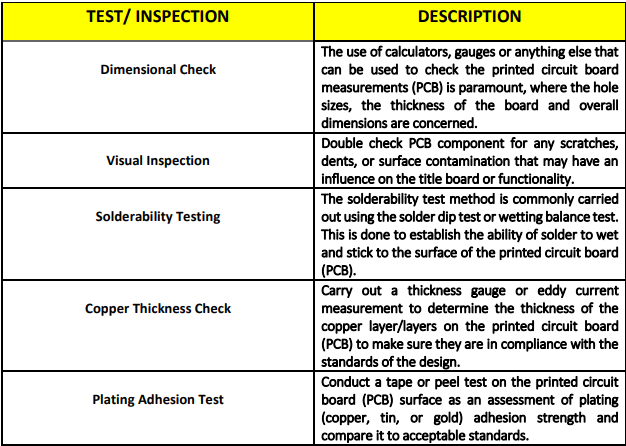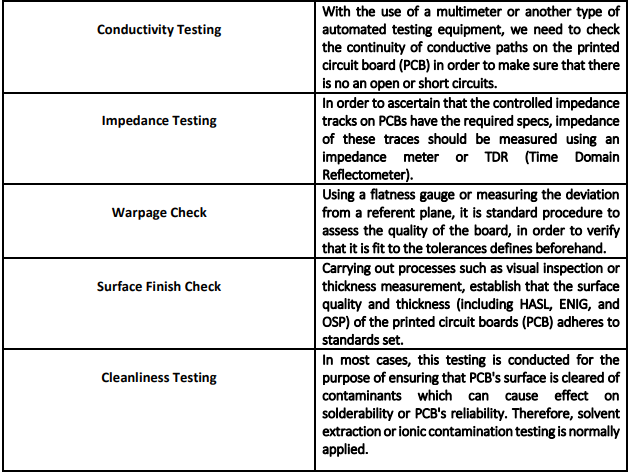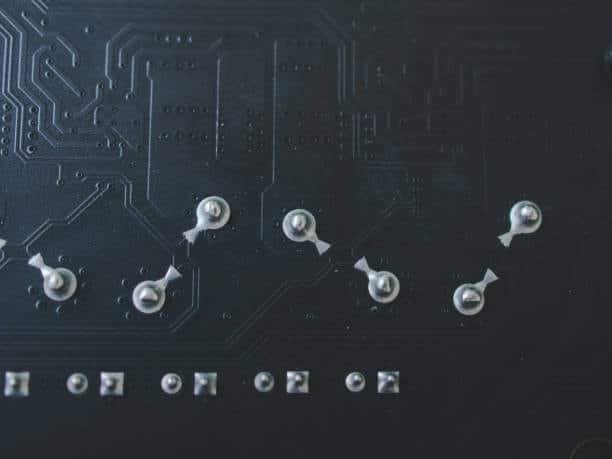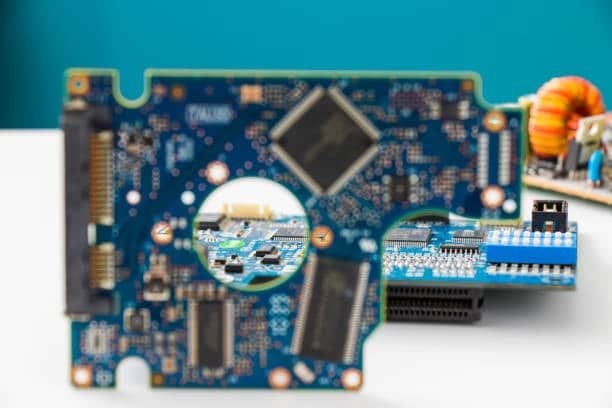In-circuit testing, of which this is a kind of electronic testing, is usually accompanied by other various techniques. 2. Flying probe testing is a non-destructive method that is employed to find the issues with connections and components. 3. Automatic optical inspection (AOI) is achieved with high performance, high speed and high accuracy visual inspections. 4.Burn-in testing, which is a strenuos testing of the DUT, will help to reveal early failures. 5. X-Ray inspection is an exemplar of the microscopic analysis of solder joints and internal structures. The aforementioned 6. functional testing ensures that the device operates as expected, and other functional testing, such as solderability and contamination testing, aims to improve quality and reliability further.
What is a pcb functional testing and what is being tested?
Testing the functionality of the Printed Circuit Boards (PCBs) is an important phase in production. This testing is carried out to ensure that the assembled PCB operates accordingly pcb assembly functional testing. By running through this kind of testing, the operation of the board as a whole is being validated to pcb tests or for the test fixture.
Testing is implemented to see whether all circuits are properly placed or wired, and whether the board can perform the functions required of it for the functional circuit tests.
The number of the tests that can be performed is rather extensive and it covers for example confirming the circuit board (PCB) that all the requirements and standards defined are satisfied, validation of power and signal integrity, and verification of specific unit and interface operation with thermal stress.
Why Pcb functional testing is necessary?
To ensure that the built circuit board would be able to accomplish all the defined activities in an exact and reliable way, thorough PCB (Printed Circuit Board) functionality testing should be done. It assists in the detection of weakness in the components and soldering or connectivity that can lead to faults or failures in the product for the testing procedures.
There is a possibility for manufacturers noticing there are some problems already at the manufacturing process through the functional testing. This saves them days and dollars spent doing diagnosis and rectifying problems. In addition to that testing, it helps maintain quality standards, as far as fortifying the consumer expectations about the final product is concerned.
PCB Testing During Manufacturing process
A wide range of quality assurance methods including those for testing are employed throughout the PCB manufacturing process to make sure that the boards will work as per design specifications test board thorough testing. For instance, the testing process is done at different stages in order to detect and solve any problems at an early stage.
1. Visual inspection
In practice, this phase is usually the first one; it involves inspecting the board visually and looking for problems like components missing, or pieces that are misaligned or soldering difficulties.
2. Automated Optical Inspection
Visual defects, such as bad soldering, component placement errors, and missing or misplaced components, are exposed during the PCB inspection by Automated Optical Inspection (AOI) using cameras and image processing algorithms.
3. In circuit testing procedures
By way of examining the reliability of each component of the board even if they are still connected to the board, ICT is able to ascertain that the board’s electrical condition is evaluated perfectly electronic components. The problem of short-circuits, components and connection are made easily detected by this.
4. Functional testing
This is the last test whereby the constructed board goes through literal checks and the chances of getting the job done are estimated with quality control without board fails. This test is used as an operation to ensure that all the components are working as desired.
5. Other Tests
Other Tests including: More tests, such as X-ray verification for hidden soldering faults, burn-in testing for reliability, and environment testing for durability, can be implemented. These tests are chosen based on what is most required by the board. Such procedures are likely also.
Benefits of PCB Testing methods
Printed circuit board (PCB) testing protocols, on the other hand, offer a number of benefits that help in keeping the electric products’ quality solderability test. Visual examination is capable of instantly determining surface-level issues, while AOI (automated optical inspections) allows for complete and precise tests on soldering and component placement concerns.
The ICT (Integrated Circuit Testing) procedure verifies the performance of the separate components and the wiring connections to confirm that they are operating correctly. Using the functional test, the assembly of the printed circuit board is verified to function correctly or otherwise. Then, the further tests such as X-ray inspection and burn-in testing are used to ensure product quality as well as reliability.
By use of route of defect-free and compliant printed circuit boards (PCBs), these approaches as a whole bring about rise in quality of products, decrease in manufacturing costs, fewer failures, and high customer satisfaction.
Tools that Need to Test in Circuit testing board
A PCB must be properly tested using in-circuit testing (ICT), which entails the use of many tools:A PCB must be properly tested using in-circuit testing (ICT), which entails the use of many tools such as peel test, flying probe test, electric board testers, solder float test, ict testing probes and some basic tests which have a very expensive system tests:
- The design of ICT Test Probe Fixture – These probes are meant to touch specific test points on the printed circuit board (PCB) which is its base, thanks to this specially designed fixture testing limit.
- ICT testing pins – ICT testing is another method to test the connection and functioning of the PCB and it is the in-circuit testing pins which are used to create connection with the components of the PCB.
- ICT/ EMBEDDED SOFTWARE – Integrated Circuit Test also known as ICT Software runs through the sequencing of tests, data collection and that data analysis.
- Testing equipment – involves a wide range of instruments for purposes of running tests, making some measurements of electrical values. Such tools are with names like digital multimeters, oscilloscopes, and signal generators.
- Programming Softwares and Hardwares – are necessary in order to be able to load and test the program if the printed circuit board has programmable components using programming equipment.
- Fixtureless in circuit test -These components are critical to ensure the PCB is well connected to the probes and the setup is stable because it is the case that the probes are able to make proper contacts with the PCB and also that the setup is stable.
- Calibration tools – inorder to ensure that the testing process method is accurate and systematic, it is important to have tools for calibration of such components as apparatus and fixtures.
Mechanical PCB Testing and Inspection tool
Now, you can see the below the table about the mechanical pcb functional testing capabilities and inspection tool each of the pcb functional testing methods mechanically:


How to Test a Circuit Board That Stops Working
The visual inspection as the initial step before we test the circuit board to detect physical damage is the first step when the circuit board is not working properly. Ensure to check for parts that have burned, traces that have been spoiled, and connections that are not tightened. Step by step then, use a multimeter to check the state of the power supply and the components separately.
In case of fuses presentation, test them. The signals can be followed with an oscilloscope, and it may also be used to see any loss or distortion Consisting the thermal camera, it is possible to detect the components which are overheating. In order to validate the problem respective board need to be tested in a system already in operation. An issue can be observed with the use of these methods, which also can be directly used to deal with repairs and replacements.
Other PCB assembly testing types include
A few more methods of PCB assembly testing are as follows:A few more methods of PCB assembly testing to other functional tests are as follows :
- Testing for boundary scans as follows: JTAG bounds integrated circuits (ICs) on a PCB and uses it to validate the functionality of ICs and find flaws in their connections.
- “Power-On Self-Test” (also known as “POST”): Once it is switched on the device performs an automatching test on the operation of the printed circuit board (PCB) before it starts to perform the operation itself to the functional testers.
- In-System Programming (ISP) is one of the post-assembly process that is used for programming the firmware or configuration data of programmable devices in the printed circuit board (PCB) so to make sure that devices usually work as it is supposed to work.
- When Joint Test Action Group (JTAG) standard is used for testing and debugging PCBs, it is tested. This avails the access to the inner nodes that may in turn be used for debugging and programming.
- Built-In Self-Test (BIST): This reveals the construction of self-test circuitry into the design of the printed circuit board (PCB) that is able to perform the diagnostic tests automatically, therefore, reducing the need for external test equipment.
- The next step is the ESS stage. Apart from obtaining the existing faults that may end up leading system failure in the field, the printed circuit board (PCB) is put under different environmental conditions such as temperature cycling or vibration to reveal the hidden faults.
- The seventh step is called destructive physical analysis (DPA), which involves microscope and X-ray to find out the problem, and it examines broken PCBs.
For the established confidence level and the quality of printed circuit board assembly, the testing methods are in addition to the more common tests as functional testing and ICT testing just like test fixtures, nails tester or other testing requirements.
Test Procedure List Creation
Generation of a test procedure list is included in the creation of the test procedure comprehensive strategy, which is one of the important parts of the process of creating a comprehensive strategy in functional tests or some have functional failures. This, therefore, requires setting up the tests to be carried out, how the tests should be conducted, expected results and criteria for each test for passing or failing the test some have ball grid arrays and have solder connections.
It is the duty of testers to perceive the test procedure list, as it explains in detail what is expected to be tested and how the testing process will be conducted.
Advantages of functional PCB testing methods
There are quite a number of benefits stemming from the functional tests of PCBs. The design is subjecting to a full examination of the printed circuit board (PCB) behavior under real-world conditions.
This evaluation facilitates the detection of defects, especially intermittent ones, and leads to higher overall reliability. These tests are able to see the errors in the process during debugging and also correct the process in order to achieve higher product quality. Thus, they act by searching for certain defects. Also, functional testing helps to satisfy the customer with the product, because of which there will be fewer customer-return and trouble claims with high frequency boards.
Why Testing Is Crucial and How It Matters to You
Because of this it provides assurance that the goods meet quality standards, performance criteria, and safety specifications, which are all fundamental in the product development phase. One main reason is that testing alters the quality and operation results of the products for everyday use, hence, everyone must test those some have solder joint issues. Irrespective of whether the products are software that runs on devices, vehicles, or the household appliances in our houses; quality assurance is a crucial factor in ensuring that these items meet our expected level of performance and reliability with final product in those electronics manufacturing industry.





